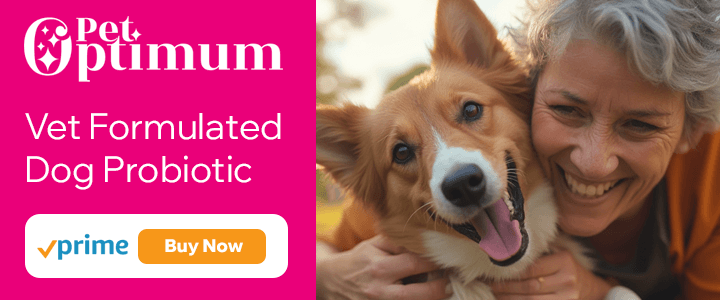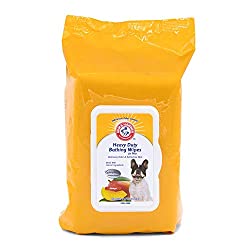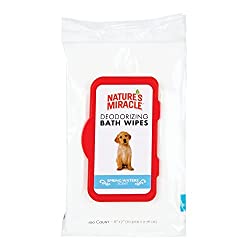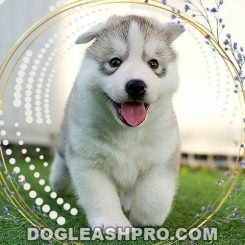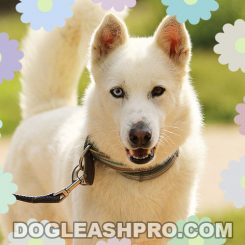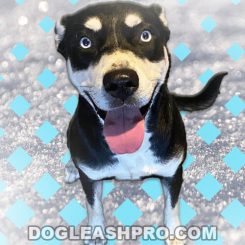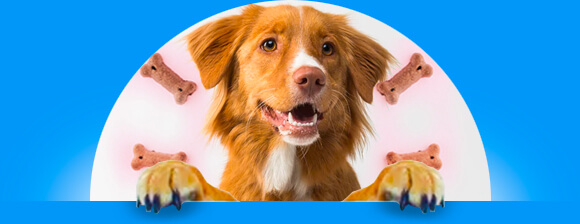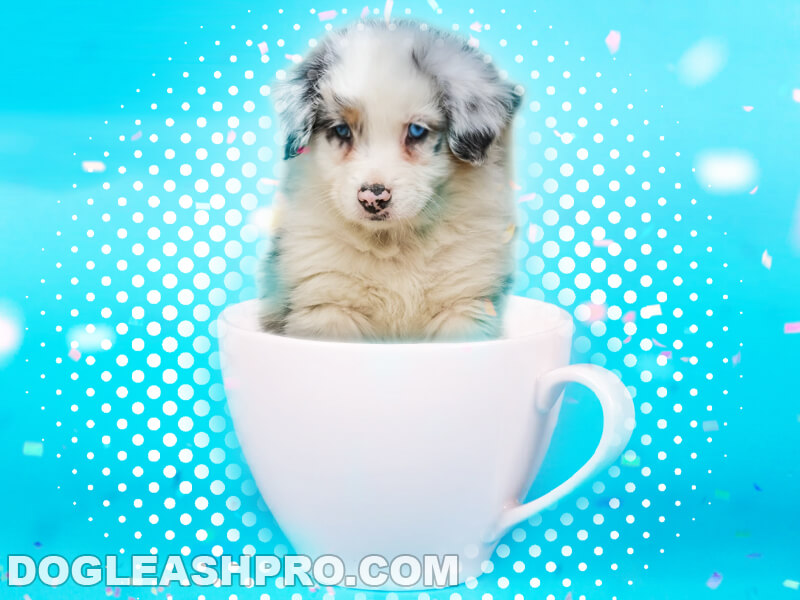
You’ve probably heard about Teacup Husky and wonder if Teacup Huskies actually exist. In this article, we will discuss everything you need to know about Teacup Husky and any risks or drawbacks of owning one.
We will also differentiate between the mini, toy, and teacup-sized dogs so you are fully aware should you decide to adopt or buy one.
RECOMMENDED: Yorkie Husky Mix (Complete Guide)
Table of Contents
What is a Teacup Husky?
A Teacup Husky would be a tiny version of a Siberian Husky dog that weighs under 6 pounds and can fit inside a Teacup. However, Huskies never get that tiny, and even the smallest Husky is 4 to 6 times bigger than a true Teacup dog.
Teacup Husky: Do Teacup Huskies exist?
Although there are dog breeds that come in Teacup sizes, Huskies are not one of them. Breeders have never managed to get these medium-sized dogs down to Teacup levels of miniaturization.
In other words, there’s no such thing as a Teacup Husky as they are physically incapable of being bred that small. However, we do have a mini version of Husky that is almost half the standard size but carries the same personality and temperament.
Teacup Husky Personality & Temperament
Teacup or Mini Huskies have all the personality traits of their larger versions. They are goofy, loving, love attention, and form a strong bond with their owner’s family. Due to the hardworking nature of their breed, Mini Huskies need a good amount of exercise so that their pent-up energy doesn’t become problematic.
Due to their size and affection for people, Teacup Huskies make fantastic family pets. Although they can get overexcited and act out if you are not careful, their size makes them easier to handle.
You may be interested in: Great Dane Husky Mix (Complete Guide)
Teacup Husky puppies
Some unethical breeders and shady sellers often falsely claim to sell Teacup Husky puppies. Even knowledgeable customers can fall victim to their trap and buy a regular, mini, or mixed breed Husky, thinking they’ve purchased a Teacup Husky version.
Teacup Husky puppies and teacup dogs, in general, fetch a higher price than their regular versions, which is why they’re a frequent scam in dog breeding circles. It is tough to predict how big a dog will get just by looking at their puppy size since all puppies start pretty small.
Siberian Husky vs Alaskan Klee Kai
The Alaskan Klee Kai is often sold as a Miniature Husky. Let’s see why that happens and how they differ.
Similarities:
| Siberian Husky and Alaskan Klee Kai | |
| Appearance | Similar wolf-like appearance and come in matching colors |
| Coat | Have a thick coat that sheds a lot |
| Eyes | Similar eye colors and can exhibit occasional heterochromia. |
| Climate | Suited for life in cold weather. |
Differences:
| Huskies | Alaskan Klee Kai | |
| Height | Up to 23 inches | Grow 17 inches tops |
| Weight | Up to 60 pounds | Grow up to 20 pounds |
| Personality | Hyperactive and energetic | Much calmer |
| Purpose | Working dogs | Companion dogs |
Siberian Husky vs Miniature Husky
Aside from the size difference, Miniature Huskies and Siberian Huskies are pretty much the same.
Similarities:
| Siberian Husky and Miniature Husky | |
| Body type | Stocky working dogs designed to pull sleds |
| Purity | Pure Huskies |
| Appearance | Have the same fur color, eye color, and coat thickness |
| Personality | Have the same temperament and personality. |
Differences:
| Siberian Husky | Miniature Husky | |
| Weight | Weigh 35 to 60 pounds | Weigh 20 to 35 pounds |
| Height | 20 to 23 inches tall | 13 to 17 inches tall |
| Recognition | Fit the breed standard according to the AKC | Does not fit the breed standard according to the AKC |
Teacup Husky vs Miniature Husky
Since Teacup Huskies don’t exist, we will consider toy Huskies that are often sold as “Teacup” Huskies.
Similarities:
| Teacup Husky and Miniature Husky | |
| Body type | Supposed to be smaller than regular Huskies |
| Breed recognition | AKC doesn’t recognize either Teacup Husky or Miniature Husky |
Differences:
| Teacup Husky | Miniature Husky | |
| Purity | Are Huskies mixed with a toy breed | Pure Huskies |
| Size | Smaller than Mini Huskies depending on their parentage | Weigh 20 to 35 pounds and up to 17 inches tall |
| Personality | Varying personalities depending on how much they take after either parent | Same traits as regular Huskies |
Fun Fact: Border Collies are also active dogs that require many hours of physical and mental stimulation.
Purebred or mixed?
If you see an adult Husky in Teacup size, there is no chance they are pure Huskies. Since Huskies are medium-sized dogs, no breeder has been able to produce their Teacup version.
You can find adorable tiny Husky crosses, though. These dogs are much smaller than even the smallest of pure Huskies. An almost Teacup-sized Husky mix can come from crossing Pugs, Pomeranians, Corgis, or some other small dog breed with a Husky.
Controversy regarding Teacup Husky and Alaskan Klee Kai
The Alaskan Klee Kai looks very much like a Siberian Husky to the untrained eye. They both have similar wolf-like features, thick coats, and hardly distinguishable fur and eye color. The difference is that the Alaskan Klee Kai is much smaller than the Husky.
Due to their similarity, the AKK is often sold as a toy or Teacup variant of the Siberian Husky, often at a much higher price than they warrant. Although there is nothing faulty with the Alaskan Klee Kai, a reputable breeder would never deceive you by selling a dog under the guise of another dog.
How big do Teacup Huskies get?
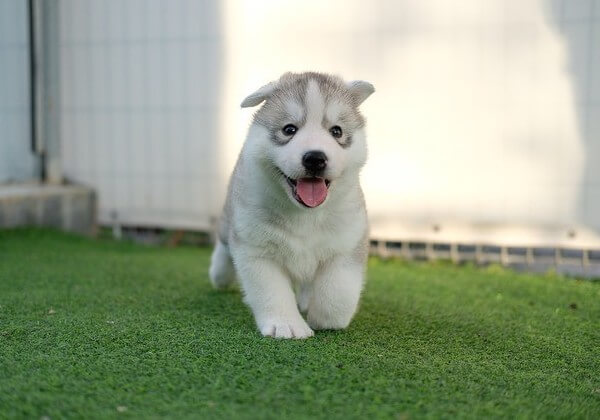
The smallest Huskies are 13 inches tall and weigh 20 pounds. These measurements put them slightly above “toy” size. You can find Husky and toy crosses even smaller, but none of them gets to be Teacup-sized.
Do Mini Huskies shed?
Yes, Mini Huskies do shed and they shed twice a year heavily. You can keep their shedding under control by brushing them once or twice a week.
Teacup Huskies’ Health
Teacup dogs suffer from numerous health issues due to their unnatural miniaturization, and they don’t have a lifespan as long as their normal-sized versions.
As for Teacup Huskies or Mini Huskies, they are just as healthy as their larger counterparts. However, this also means inheriting common health issues of regular Huskies.
The risk of genetic problems like blindness, glaucoma, seizures, laryngeal paralysis is present in all Huskies. On the bright side, Mini Huskies aren’t as prone to hip dysplasia as regular Huskies.
How much is a Teacup Husky?
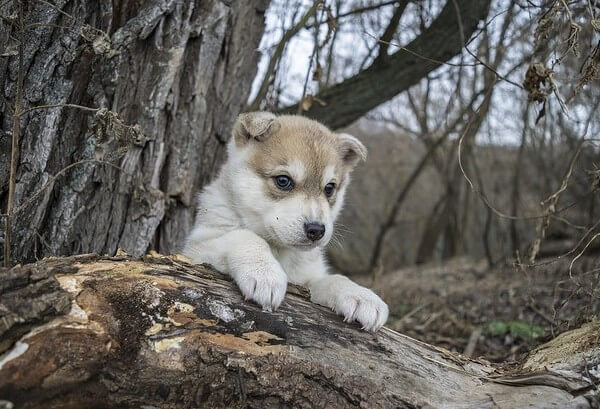
Teacup varieties often go for a much higher price than their regular-sized counterparts, which is why many breeders will try to stick you with a Husky claiming it to be a Teacup.
Although you can find Teacup dogs, a Husky cannot get that small. “Teacup” Huskies can go for as high as $2,000, but those are most likely Mini Huskies or Huskies mixed with some other dog breed. Sometimes, they can be a completely different dog that looks like a Husky (like the Alaskan Klee Kai).
Where can I buy a Teacup Husky?
You can’t buy a Teacup Husky—at least not a pure one. Huskies don’t come in Teacup sizes, and anyone trying to sell you a Teacup dog that looks like a Husky is probably a fraud.
However, you can buy a Mini Husky. A Mini Husky is almost half the size of a regular Husky. If you want an even smaller Husky—and breed purity is not an issue—you can find some adorable tiny Husky mixes.
How to care for a Teacup Husky?
Miniature Huskies have the exact requirements as their larger versions. Since they are not a separate breed, they match regular Huskies in feeding habits, grooming, and energy.
Although Mini Huskies also suffer from some genetic issues large Huskies are prone to, their smaller bodies protect them from specific size-related health issues.
1. Exercise
Huskies are highly active dogs, and Mini Huskies are no different. If they don’t get ample physical stimulation, they can get pretty destructive. These dogs were built to pull sleds, and activities that require running suit them best.
2. Diet
Mini Huskies need at least 1,000 calories a day, preferably divided into two meals. Although Mini Huskies don’t require as much food as their standard version, they still need a nutritious well-balanced diet to keep them full throughout the day.
3. Grooming
Mini Huskies have thick double coats and they can shed quite a bit, particularly during the fall and spring seasons. However, regular grooming will help. You’ll want to brush their fur twice a week to keep their shedding under control.
Bathe your dog every month, and ensure daily cleanliness by using a damp towel or doggy wipes. For my two furry family members, I alternate between these two dog wipes to keep their skin and coat clean and smelling fresh.
4. Mental stimulation
Huskies are intelligent dogs so the Mini Huskies need something to challenge their brains. If they don’t have anything to do and are not mentally stimulated, their behavior can get problematic. Invest in toys for your miniature Husky to keep them occupied in their free or spare time.
5. Training
Huskies get excited quickly and may behave erratically if they don’t get proper training. They also have a fixation for prey, and they ignore commands when they are chasing something. With appropriate training, these dogs can become better behaved.
6. Regular vet visits
Mini Huskies are generally healthy dogs, but they still suffer from several genetic problems. Make sure to keep vet visits regular—especially when your Husky is old. Regular vet visits will help catch any disease before it’s too late.
7. Spaying/neutering
Taking away a dog’s ability to have kids might sound cruel, but it can significantly extend your Mini Husky’s life. Getting the dog neutered prevents males from acting aggressively and females from unwanted pregnancy. Fixing also prevents various diseases and helps dogs live healthier.
Teacup Husky: Risks and Drawbacks of owning one
The biggest drawback of buying a Teacup Husky is not getting a real Husky. Fraudulent breeders often try to cash on the rarity and demand of Teacup dogs. In their greed, they focus on shrinking the dog by all means, even if it results in a puppy that would suffer from lifelong health complications.
Remember to never buy from a breeder that boasts about their Teacup dogs. No breeder would breed a Teacup dog intentionally, and producing such dogs on purpose is animal cruelty.
Is breeding Teacup Husky considered ethical?
No, breeding Teacup Husky is not ethical. When it comes to breeding, a dog’s health should be the top priority. Trying to unnaturally shrink a dog doesn’t have the best results, which is why breeding Teacup Huskies is unethical. In fact, no reputable breeder would try to breed a Teacup-sized dog intentionally.
Is a Teacup Husky right for me?
The Husky is a playful, loyal, and intelligent family dog, but its size can be an issue for some. Mini Huskies are an excellent alternative in such a case.
However, if you want a really tiny dog, you should look into other breeds. Teacup Huskies don’t exist, and you shouldn’t fall for someone claiming they have one.
What Other Dog Breeds Have Teacup Sizes?
Teacup size occurs in dog breeds that are already small. These breeds include Chihuahua, pug, Yorkshire terrier, Pomeranian, Maltese, and Shih Tzus to name a few.
Understanding the Non-Standard Dog Sizes
Miniature
The term “miniature” refers to the smaller version of a bigger dog breed. There is no size definition for miniature dogs. As long as a dog is smaller than the average size of that breed, it’s considered a miniature.
Miniature dogs are ideal for dog enthusiasts who want the qualities of bigger dogs in a petite, easy-to-handle body. Miniaturization is either achieved through selective breeding of pure dogs or by partnering a bigger dog with a small or toy dog—like the Pomeranian, poodle, or Yorkshire terrier.
Toy
Toy dogs is another name for small dog breeds. Toy dogs hardly grow taller than 12 inches and weigh under 10 pounds — much like a toy. These dogs make ideal pets for city dwellers as they are comfortable in small living spaces.
Unlike Teacup dogs, all major kennel clubs recognize toy dogs. Their popularity among celebrities and high-end pet owners has made them a status symbol, so toy breeds usually fetch a high price. These dogs are easy to carry and handle, but their delicate bodies and “big-dog” attitudes require special care.
Teacup or Micro
Teacup or micro-sized dogs aren’t a different breed and are mostly born to regular-sized toy dogs. Sometimes, the litter gets a pup that is smaller than the rest, and they don’t reach the same size as their siblings. Some sellers market these runts as specialty dogs and try to sell them at a higher price.
There is no official size limit for a Teacup dog, and the AKC doesn’t recognize this term. Their breeding is discouraged as these tiny dogs often suffer from various health and psychological problems as well as genetic disorders. Unfortunately, they have a high demand among wealthier dog-owners who view them as novelty pets.
Two Different Sizes of Siberian Huskies
Siberian Huskies come in two sizes: standard and miniature.
Standard
Huskies are medium-sized dogs with a solid build to perform heavy-duty jobs—like pulling sleds. The standard male Husky reaches a height of between 21 and 23 inches, with females only an inch shorter on average. The weight difference is more pronounced, with male Huskies weighing 45 to 60 pounds and females weighing 35 to 50 pounds.
Mini
Mini Huskies arrived on the scene in the early 1990s. These dogs are perfect for those who want Husky qualities in a smaller package. Adult Mini Huskies weigh 20 to 35 pounds—almost half the average weight of a regular Husky. They also grow 13 to 17 inches tall, putting them just above the toy category. Do note that the AKC doesn’t recognize them.
DISCLAIMER: THIS WEBSITE DOES NOT PROVIDE MEDICAL ADVICE
The information, including but not limited to, text, graphics, images and other material contained on this website are for informational purposes only. No material on this site is intended to be a substitute for professional veterinary advice, diagnosis, or treatment. Always seek the advice of your veterinarian or other qualified health care provider with any questions you may have regarding a medical condition.
Resources:
https://www.petmd.com/dog/general-health/truth-about-teacup-dogs
https://www.akc.org/dog-breeds/toy/
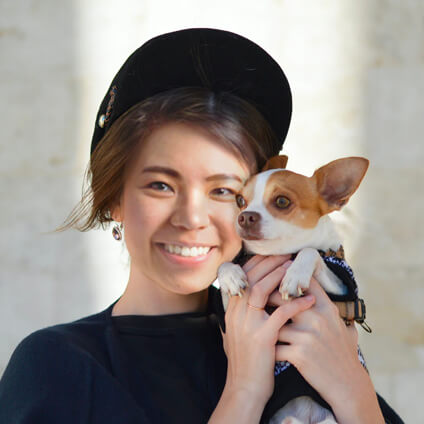
With over five years of specialized experience as an animal writer, my expertise lies in dog nutrition, health, behavior, grooming, and training. I am dedicated to delivering helpful and informative content that caters to the well-being of our furry friends. My primary goal is to empower pet owners with knowledge and ensure our canine companions thrive in health and happiness. In my free time, I love volunteering at local dog rescue centers.

